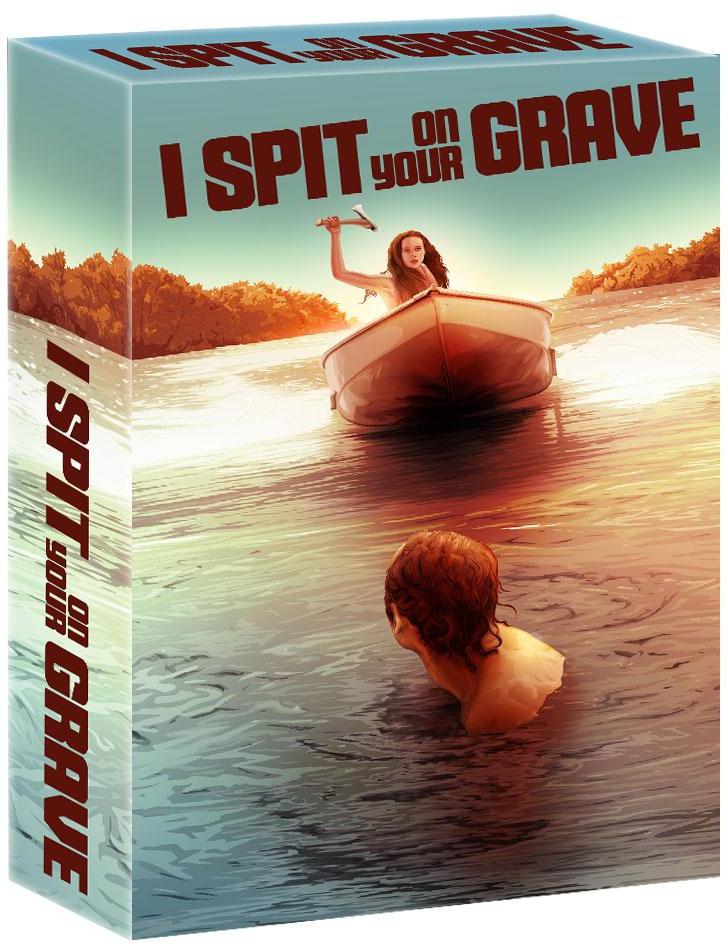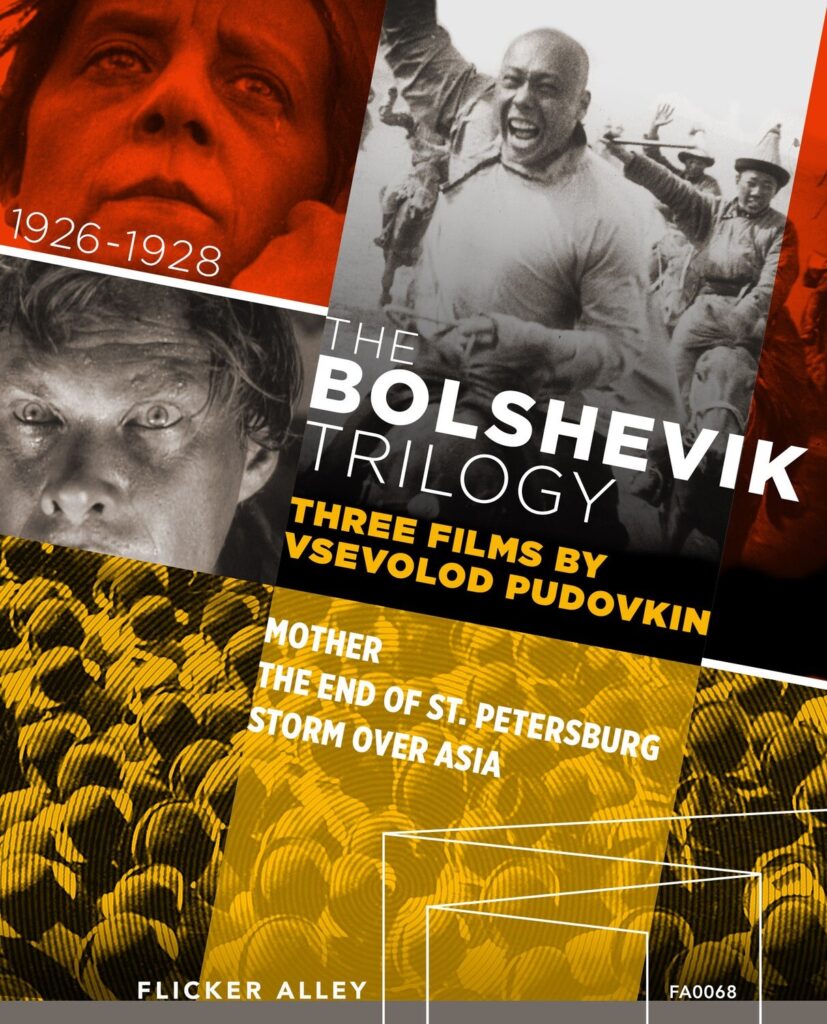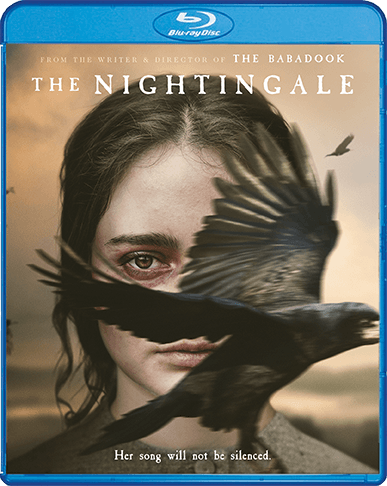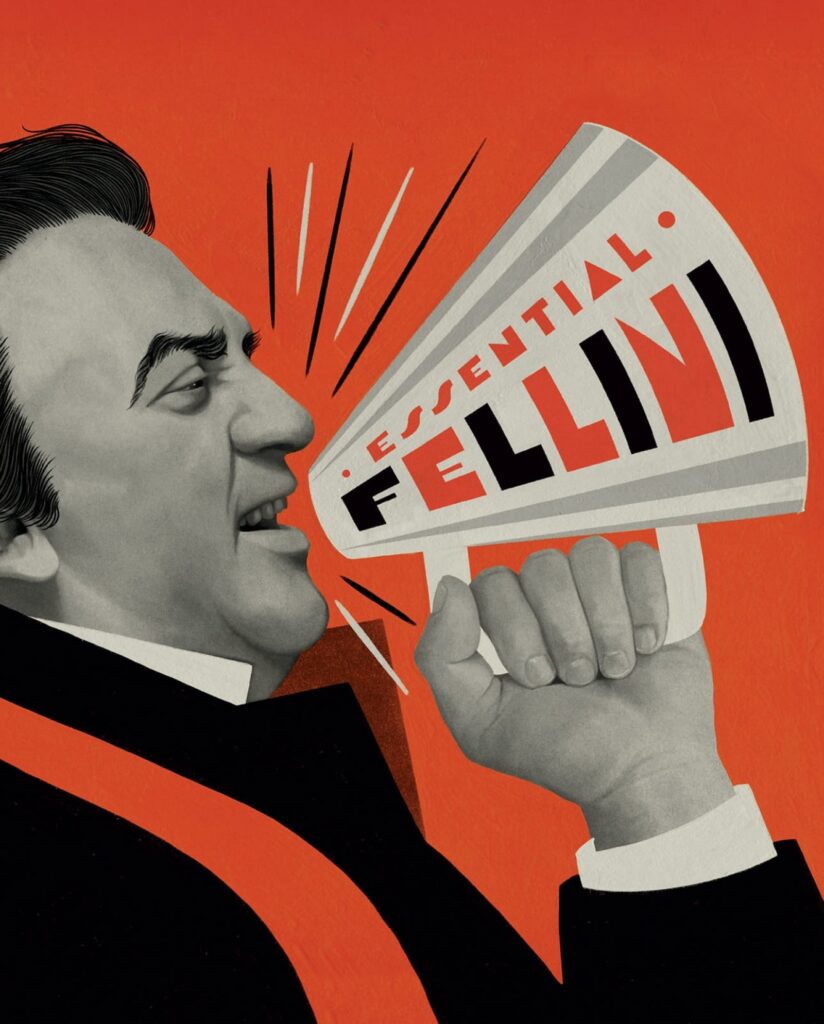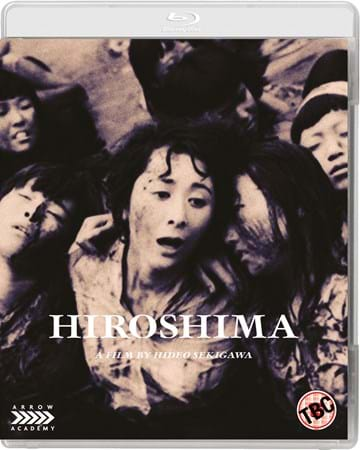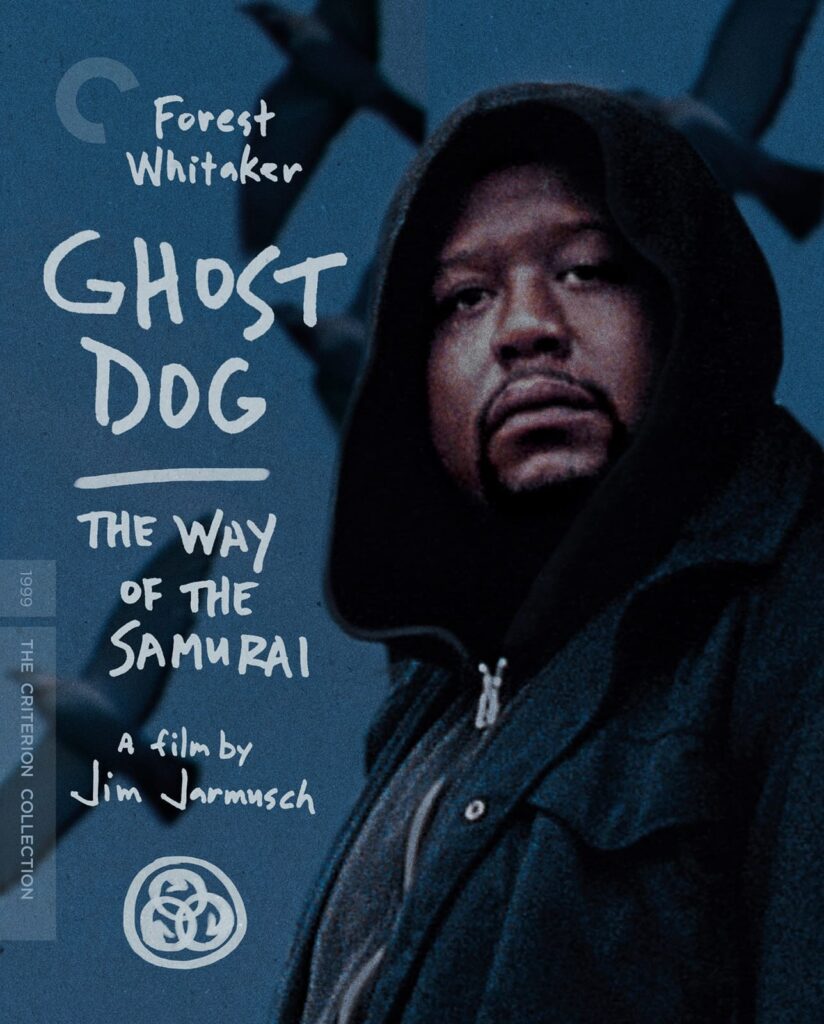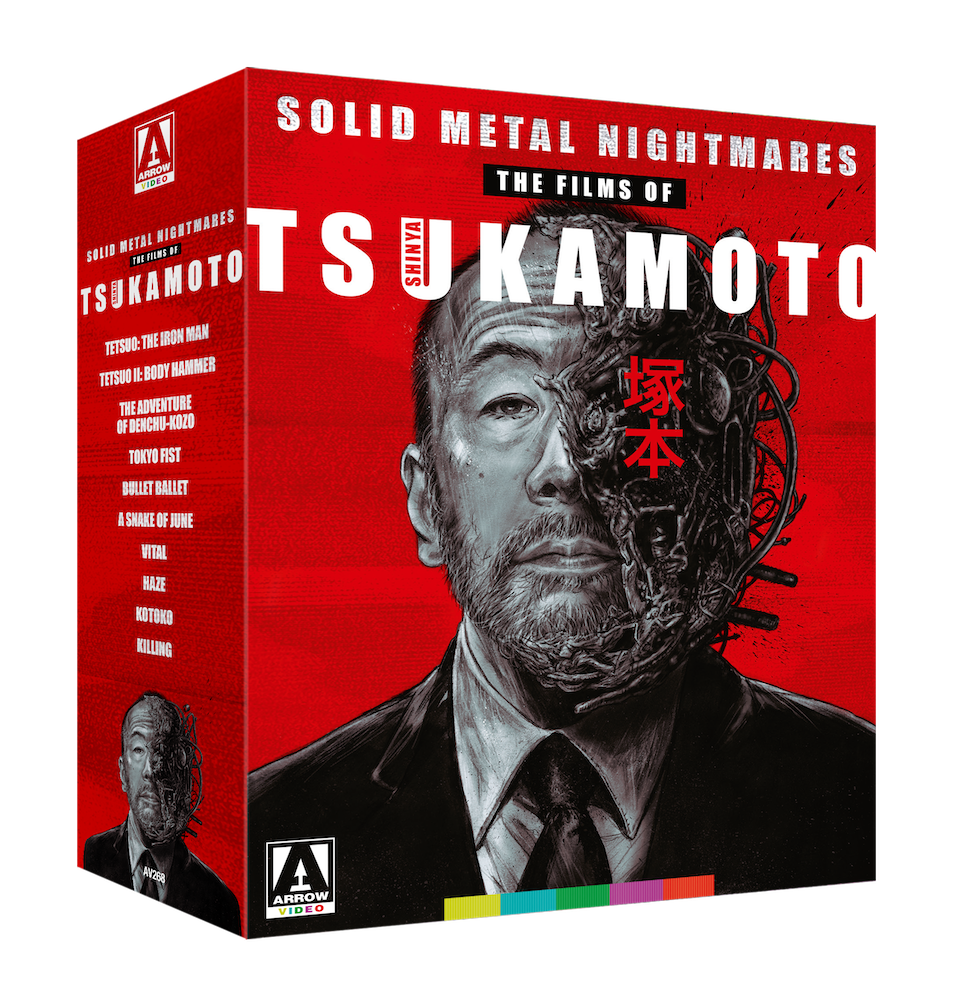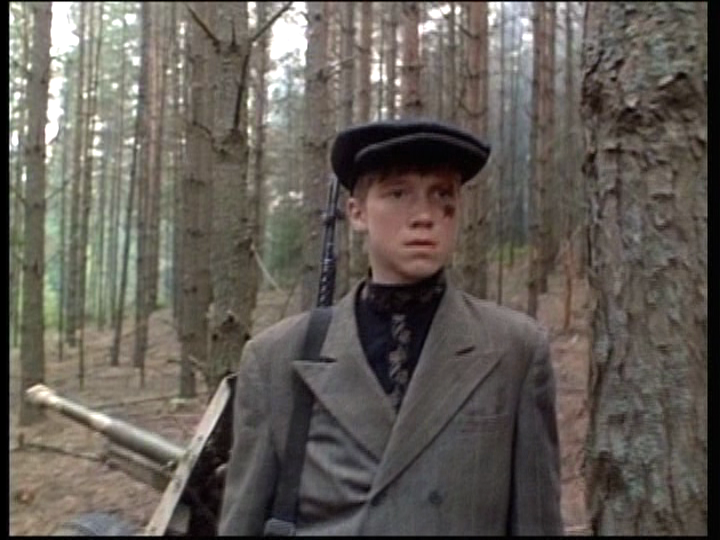Hello again. As this year of malfeasance wobbles to an end, it is time again for the Film Ruminations Top 15 Home Video Releases of 2020. As with all years, I must start with the caveat that I have not experienced every release. I have no interest in doing so. If you want to check out the 17th release of Inception then by all means go with God and do so, but I will not join you.
I do want to take a quick moment and mention a few releases that I opted against including in the top 15 for various reasons. I have chosen to leave off the new Blue Underground 4K release of Lucio Fulci’s Zombie, because their Blu-ray from 2019 was on the top of last year’s list. I am also omitting the new Second Sight release of Dawn of the Dead because the Blu-rays are region locked, and I have a wishy-washy policy against trying to hock both a Blu-ray and a region free player. Finally, I left off the rerelease of The Swimmer, from Grindhouse Releasing, because the primary difference is the addition of a CD soundtrack. Take these with the highest recommendations, but I don’t feel right about highlighting them below.
With that said, please dear reader, read on.
15. Zombie 5: Killing Birds
When I was first watching this film, my lovely spouse walked into the room. It was about 10 minutes into the movie when they were introducing the main characters. Approximately 17 seconds later she said, “nope,” and told me to pause it until she left.
From VinegarSyndrome.com:
A group of college-aged ornithologists have taken a class trip deep into the wilderness on a quest to find and study a rare and possibly extinct species of bird. Despite receiving ominous warnings, both human and avian, they set up camp in a musty old house, only to find themselves under siege from mysterious supernatural forces. But it’s not just the house or the hordes of hungry birds that they have to worry about, they quickly realize that they’re also going to have to contend with a group of bloodthirsty zombies, who have descended on the deserted farmhouse!
A positively jaw dropping slice of late 80s horror, as only Italians are capable of imagining, Claudio Lattanzi’s Killing Birds (aka Zombie 5 and Raptors) is an ‘everything but the kitchen sink’ styled thriller which piles on gore and insane plot twists. Starring Lara Wendel (Tenebrae) and Robert Vaughn (Good Luck Miss Wychoff), and produced by exploitation auteur Joe D’Amato (Anthropophagous), Vinegar Syndrome brings Killing Birds to Blu-ray for the first time, newly restored in 2k from its original negative.
First things first. Killing Birds is awful. It is badly written, horribly acted, and truly reprehensible. The fact that any criminal organization would deign to release this with a brand-new restoration is a clear indication that we are truly, truly blessed.
While there are technically also zombies, Killing Birds is about some crazy frickin’ birds who gouged out Robert Vaughn’s eyes, and then birds and some zombie friends terrorize college students in one of what must have been the most bananas elevator pitches ever. “A group of college-aged ornithologists have taken a class trip deep into the wilderness on a quest to find and study a rare, and possibly extinct, species of bird. Oh, did I mention the birds want to kill them? And there are zombies” It goes from an Oscar-bait style plot, ala Gorillas in the Mist, and decays into a high school shot-on-video-style story.

This is the sort of movie that you watch with awe in your heart at just how much money was available in Italy during the 80s for horror/zombie movies. Quality was insignificant as long as the movie could put butts in seats. A common occurrence on this list is going to be movies that I pre-ordered the moment they were announced. This is one of them.
You are not going to buy this because you are looking for some classic piece of cinema. You are buying and watching this, over and over, because it is relaxing. It is joyful. It is everything that I have come to love about this renaissance of modern home video.
Special Features
- Newly scanned & restored in 2k from its 35mm original negative
- Includes two soundtracks: Original English Soundtrack, Italian dubbed.
- “Talons” – an extended video interview with writer/director Claudio Lattanzi
- “Birds of a Feather” – a video interview with sound man Larry Revene
- Brand new audio commentary with film historian and author Samm Deighan
- Original theatrical trailer (English)
- Original Theatrical trailer (Italian)
14. Maya Deren Collection
Director: Maya Deren
Screenplay: Maya Deren
Minutes: 208
Year: Various
Release: Kino Lorber
My first exposure to Maya Deren was viewing Meshes of the Afternoon in Flicker Alley’s Early Women Filmmakers: An International Anthology, which was released in 2017. Then, her work appeared again in their Masterworks of Avant Garde Cinema. I knew that I needed to see more, and I always hoped that someone would release this very collection.
From KinoLorber.com:
Maya Deren is one of the most important American experimental filmmakers of all time and Kino Classics and Re:Voir are proud to present new 2K restorations of her essential work. Along with being a filmmaker, Deren was a choreographer, dancer, film theorist, poet, lecturer and photographer, and she brings all of these disciplines together in her dreamlike and ecstatic films. Her most famous and influential is Meshes of the Afternoon (1943), co-directed with Alexander Hammid, which depicts a surrealist slippage in reality as a woman’s home becomes a shifting landscape of beauty and menace. At Land (1944) is another psychogeographical journey where Deren washes up on a beach and encounters a multiplicity of selves. Also included are four 1940s dance films (A Study in Choreography for Camera, Ritual in Transfigured Time, Meditation on Violence, and The Very Eye of Night) in which, as Deren wrote, “I have attempted to place a dancer in limitless, cinemato-graphic space.” She and Hammid put felines through a similarly intimate process in The Private Life of a Cat (1947), which foresaw the future of cat videos. A different exploration of movement occurs in Divine Horsemen (1947-1951, 1979), a remarkable hour-long montage of footage that Deren shot of Haitian Voodoo ceremonies. Stan Brakhage called Maya Deren “the mother of us all.” The history of avant-garde film is unthinkable without her.
It might be safe to say that there is a very good chance we wouldn’t have the David Lynch we have today without the works of Maya Deren. That, in and of itself, is why studying this set is essential. But I imagine the same could be said for some of the more unique choices of Jean-Luc Godard. And Hollis Frampton and Stan Brahkage are certainly in her debt.
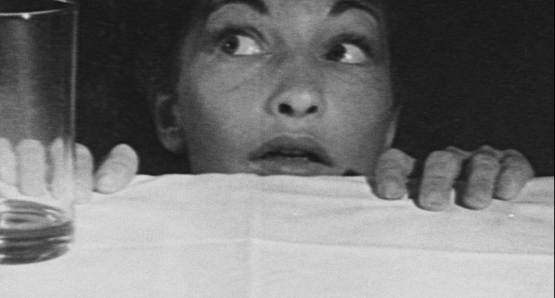
These new 2K restorations aren’t up to the same quality level as a Criterion release, but I suspect that they are the best that Kino could do with the source materials available, considering the age of the materials. However, picture quality is not really the value in this collection. Being able to hit play and enjoy a little over three hours of early American Avant Garde cinema is the true treasure.
It is very possible that this release may have been missed among the flashier discs this year. If that is the case, then please consider this the reminder that you need to add The Maya Deren Collection to your collection.
Special Features
- Audio commentaries on Divine Horsemen, Meditation on Violence, and Ritual in Transfigured Time by film scholar Moira Jean Sullivan
- Audio commentaries on At Land, Meshes of the Afternoon, and The Very Eye of Night by film curator Thomas Beard
- Never-released outtakes from the original soundtrack recording sessions with Teiji Ito on Meshes of the Afternoon and The Very Eye of Night
- Booklet essays by film scholar Moira Jean Sullivan
- Invocation: Maya Deren (1987, a documentary by Jo Ann Kaplan)
- Alternate French audio for Divine Horsemen recorded by Raymonde Carasco
- Voix-off version française enregistrée par Raymonde Carasco
13. I Spit on Your Grave Collector’s Edition
Director: Meir Zarchi
Screenplay: Meir Zarchi
Minutes: 353
Year: 1978 and 2019
Release: Ronin Flix
I don’t remember what year it was, but I remember walking around a Best Buy and happening across a DVD of I Spit on Your Grave. When I was going through the checkout, I said to the cashier that they shouldn’t be selling stuff like this, and I was going to take it off their hands. I am sure that I fooled them as the paragon of morality that I am.
From RoninFlix.com:
In 1978, one film changed the face of cinema forever: I SPIT ON YOUR GRAVE. Camille Keaton stars as Jennifer Hills, a young and beautiful career woman who rents a back-woods cabin to write her first novel. Attacked by a group of local lowlifes and left for dead, she devises a horrific plan to inflict revenge in some of the most unforgettable scenes on film. 42 years later, the sequel, I SPIT ON YOUR GRAVE: DEJA VU, sends successful writer Jennifer Hills (Camille Keaton) back to where it all began to face the wrath of the families of those she left for dead. Kidnapped along with her daughter Christy (Jamie Bernadette), it’s a tense game of hunt or be hunted against a ruthless gang of degenerates overseen by a violently unhinged matriarch Becky (Maria Olsen). Additionally, this box set includes, GROWING UP WITH I SPIT ON YOUR GRAVE, an exhaustive analysis of the film’s history directed by Meir Zarchi’s son, Terry Zarchi. Available on Blu-ray for the first time in North America, this feature length documentary is what every I SPIT ON YOUR GRAVE fan has been waiting for!
On one hand you have one of the laziest inciting incidents, but on the other you have one of the most brutally cathartic responses. It had been a while since I had watched I Spit on your Grave, and I was curious to see its sequel, I Spit on your Grave: Deja Vu.
I was very interested to see that Ronin Flix was releasing a set of the two films. While the second one is a little weaker than the original, it has a patina of the low budget, run-and-gun filmmaking style that kept my attention.
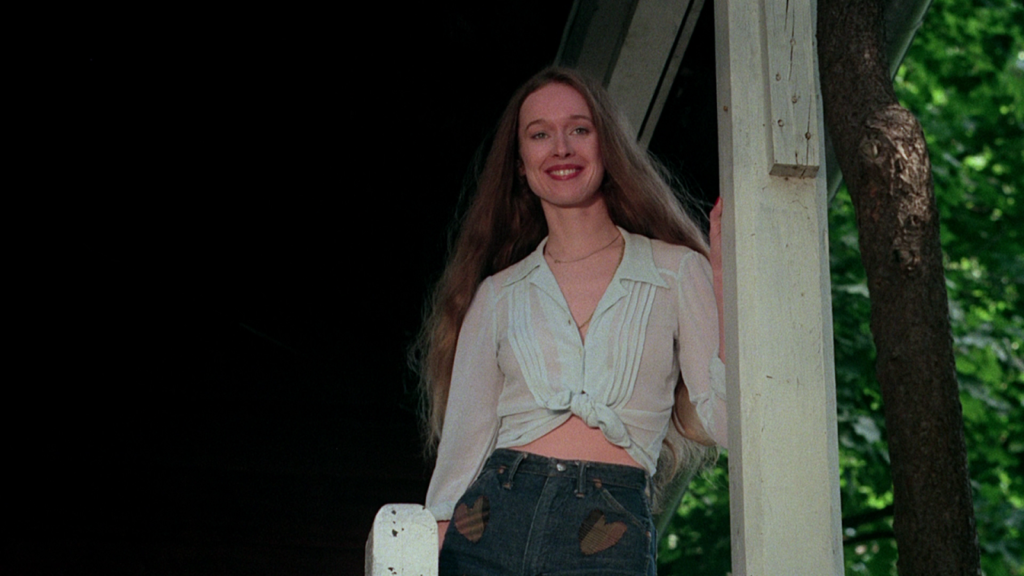
The restoration of the film that Ronin Flix crafted, in concert with director Meir Zarchi, is to be applauded. The additional special features take this from a classic rape and revenge film to a strange family affair. I cannot imagine that there will ever be a more complete collection of these two films than this release. If this is something you are interested in, I highly recommend snagging a copy while they are available.
Special Features:
- New 4K scan and restoration of the original uncut feature film, High Definition Blu-ray (1080p) widescreen presentations, English SDH Subtitles (Feature Presentations Only), A horde of Special Features, 3 Discs
- DISC 1 – I Spit on Your Grave (1978): NEW 4K SCAN AND RESTORATION FROM DIRECTOR MEIR ZARCHI’S 35 MM ORIGINAL CAMERA NEGATIVE, NEWLY RESTORED DTS-HD MASTER AUDIO MONO, DTS-HD 5.1,
- NEW Jennifer’s Journey – the locations of I Spit on Your Grave featurette hosted by writer Michael Gingold,
- Audio Commentary with writer / director Meir Zarchi,
- Audio Commentary with Film Critic Joe Bob Briggs,
- The Value of Vengeance – Meir Zarchi Remembers I Spit on Your Grave,
- Alternate Day of the Woman Opening Title,
- Theatrical Trailers,
- TV & Radio Spots,
- Still Gallery and
- NEW Slideshow with Rare & Behind-the-Scenes Photos from the Set, Reversible Cover
- DISC 2: I Spit on Your Grave: Deja Vu (2019): DTS-HD Master Audio 5.1 Surround, NEW
- Audio Commentary with Film Critic Joe Bob Briggs,
- NEW Cast Interviews,
- EXCLUSIVE The Making of I Spit on Your Grave: Deja Vu,
- Behind-the-Scenes footage with director Meir Zarchi and cast,
- Theatrical Trailers
- DISC 3: Growing up with I Spit on Your Grave (2019): New DTS-HD Master Audio 5.1 Surround,
- EXCLUSIVE Deleted Scenes,
- NEW Terry Zarchi’s 8mm film starring Camille Keaton,
- NEW Home Movies – Camille and Meir’s wedding, Trailer
12. The Bolshevik Trilogy – Three Films by Vsevolod Pudovkin
Director: Vsevolod Pudovkin
Screenplay: Nathan Zarkhi, O. Brik, I. Novokshonov
Minutes: 291
Year: 1926–1928
Release: Flicker Alley
Long time readers will know of my affection toward the releases from Flicker Alley. Nearly every time I get a newsletter profiling a new release I get excited, because I almost never know anything about what I am getting into, and I typically really enjoy them.
From FlickerAlley.com:
After serving alongside his fellow Russians in the first World War, Vsevolod Pudovkin was radically altered by a life-changing screening of D.W. Griffith’s Intolerance, inspiring the young man to shift away from his studies in chemistry in order to pursue the cinematic arts.
Pudovkin embarked on his narrative feature debut in 1926 with Mother, regarded by many as a masterpiece of the Russian silent era, and a showcase for Pudovkin’s emotive approach to editing. Pudovkin followed Mother’s tale of proletariat uprising with the Bolshevik-themed The End of St. Petersburg and the Mongolia-set Storm over Asia in 1927 and 1928 respectively, dazzling the world with a trio of masterful films centered around this tumultuous and revolutionary period in Russian history.
I wouldn’t be surprised if you are unfamiliar with Vsevolod Pudovkin. What is a little disappointing is that every film buff is probably aware of his contemporary Sergei Eisenstein, even though both directors played a very important role in the early years of Russia’s Mosfilm film studios.
The first two films, Mother and The End of St. Petersburg, play nicely alongside Eisenstein’s Battleship Potemkin, and Strike. It is my hope that this little collection will help connect the two peers when folks study Soviet film history.

The film that I enjoyed the most out of this set is Storm over Asia. There isn’t much accuracy in this propaganda film, but the performances seem genuine and the story is interesting. Soviet-era films tend to be revolutionary propaganda features, whereas Storm over Asia is anti-British colonization and anti-capitalism, which is a nice change of pace.
The Flicker Alley release of The Bolshevik Trilogy is a welcome addition to the shelves of any fan of silent, transgressive cinema.
Special Features:
- Chess Fever (1925) – Pudovkin’s directorial debut, this ingenious satire of the Moscow chess craze combines staged scenes with documentary footage and features a number of cameos from the worlds of cinema and chess.
- A Revolution in Five Moves – A visual essay showcasing the five edits that inspired the Bolshevik revolution.
- Five Principles of Editing – A comparison of Pudovkin’s “Five Principles of Editing”.
- Amatuer Images of St. Petersburg (1930)
- Notebooks of a Tourist Presents: St. Petersburg (c.1920)
- Audio Commentary: Storm over Asia (1928) – Featuring film historian and scholar, Jan-Christopher Horak.
- Audio Commentary: Mother (1926) – Featuring Russian film historian and curator Peter Bagrov.
- Souvenir Booklet – Featuring a new essay by film author and historian Amy Sargeant.
11. Deadly Games: Dial Code Santa Claus
Director: René Manzor
Screenplay: René Manzor
Minutes: 87
Year: 1989
Release: Vinegar Syndrome
Have you ever wanted to see a Christmas movie that is an amalgam of Home Alone, War Games and Straw Dogs? Have you ever thought, what if a killer Santa Claus was trying to kill a child rather than teenagers?
From VinegarSyndrome.com:
Young Thomas is obsessed with action movies and video games. So much for that, when his mother is out, he delights in turning the sprawling mansion where he and his invalid grandfather live into a makeshift battleground; concocting and setting elaborate traps. Home alone, grandfather aside, on Christmas Eve, Thomas is soon faced with an unexpected – and very unwelcome – guest, a department store Santa Claus, who is, in fact a deranged maniac on the loose! Putting his skills into action, Thomas begins an all-out assault against the murderous Saint Nick, rather than risking his Christmas turning into something closer to Halloween…
A dazzling mix of thriller, and horror, and long rumored to be the unofficial inspiration for one the biggest Hollywood blockbusters of the 90s, René Manzor’s Dial Code Santa Claus (aka 3613 code Pere Noel aka Deadly Games aka Game Over) is a would-be cult sensation that sadly never was. Featuring ultra-stylized cinematography from Pal Gyulay which highlights the often dream-like production design, Vinegar Syndrome is honored to present your next holiday favorite, Dial Code Santa Claus, in its U.S. disc debut and worldwide 4K Ultra HD debut, from a brand new 4k restoration of its original 33mm camera negative.
When I ordered this film, I had zero expectation that it would make this list. This movie is a real trip from the opening scene. The only flaw that I can identify is that the killer’s motive is not clear. Well, maybe that and Thomas’s mullet.
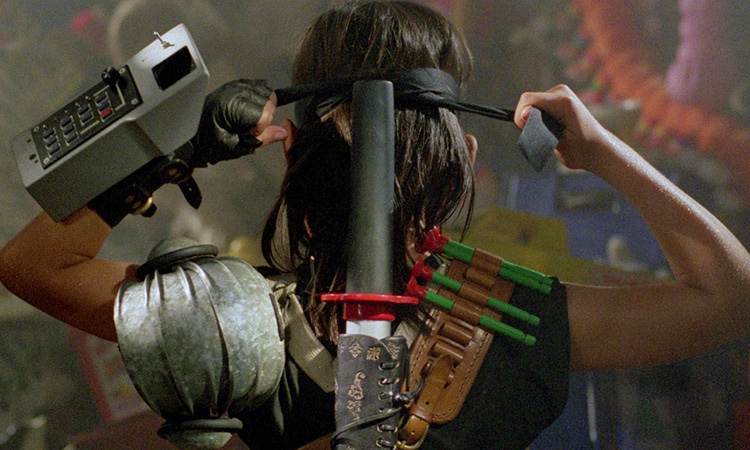
Something that is very special about this film is just how beautiful it is. I am not talking about the 4K Ultra HD, which is glorious, but this is one of the most visually stunning Christmas movies—let alone Christmas horror pictures—that I have ever seen. It truly is a sight to behold.
The sole downside to this release is its price tag. While I absolutely recommend Deadly Games: Dial Code Santa Claus, I also recommend waiting for one of Vinegar Syndrome’s half-off sales. They happen a few times a year, and I expect Deadly Games will qualify for the half-off by the next one.
Special Features
- Interview with director René Manzor
- Interview with actor Alain Musy
- Extensive still gallery with director commentary
- Multiple storyboards & scene comparisons
- Archival behind-the-scenes featurette
- Synapse – a short film by René Manzor
- Pre-trailer model shots featurette
- Bonnie Tyler music video for the song “Merry Christmas”
- French trailer
- French teaser trailer
- French television stops
- Italian trailer
- English trailer
10. Doctor Sleep
Director: Mike Flanagan
Screenplay: Mike Flanagan
Minutes: 122 / 152
Year: 2019
Release: Best Buy exclusive 4K with Directors Cut
The first of two new movies to be on this list, Doctor Sleep, one of my most anticipated movies of 2019, and at no point in time was I disappointed.
From WBShop.com:
Still scared by the trauma he endured as a child at the Overlook Hotel, Dan Torrance faces the ghosts of the past when he meets Abra, a courageous teen who desperately needs his help – and who possesses a powerful extrasensory ability called the “shine.”
One of my desert island favorite films is Stanley Kubrick’s The Shining. Without Kubrick’s vision of that story, Mike Flanagan’s Doctor Sleep would look vastly different, if it existed at all. The only reason I mentioned Kubrick’s film is to suggest just how tall and challenging Mike Flanagan’s mountain climb was.
The tightrope that Flanagan walks with this film is quite impressive. He negotiates the differences between the two books to give Stephen King a satisfying conclusion to The Shining while simultaneously crafting an expert adaptation of Doctor Sleep.
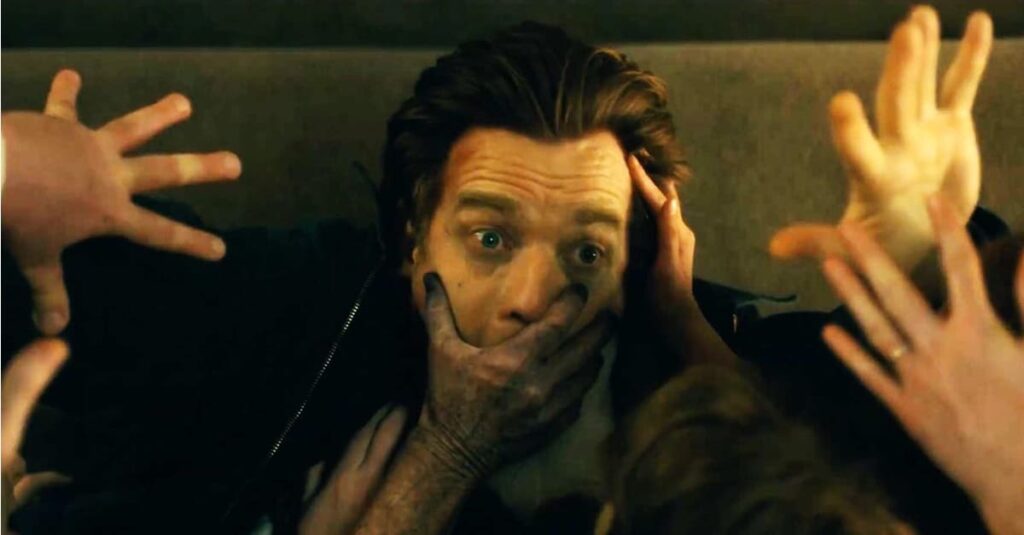
On top of this, all the performances are electric and nigh perfect. I believe that I am on record saying that I would gladly watch Ewan McGregor read the phonebook, so it is not far-fetched that I would laud his performance. However, the true star of this show is Rebecca Ferguson, who plays Rose the Hat and of whom I was completely unfamiliar with. She was magnetic. Now I am ready for anything from her, and I am possibly secretly in love.
What makes this a release worthy of a Top 15 list? The special features are interesting, but they are little more than what you might get with an electronic press kit that you find on YouTube. Where this release really shines is the two different cuts of the film. The director’s cut adds around 30 extra minutes, which takes the film from a standard long movie to more of a classic Hollywood epic roadshow type film. What is interesting, though, is that regardless of the running time, this movie moves at a fast pace, so it doesn’t ever really feel as long as it is.
Special Features:
- From Shining to Sleep
- The Making of Doctor Sleep: A New Vision
- Return to the Overlook
9. The Nightingale
Director: Jennifer Kent
Screenplay: Jennifer Kent
Minutes: 136
Year: 2018
Release: Shout Factory
After seeing the Babadook I knew that I would be watching anything that Jennifer Kent would make, without question. Well, maybe with a few questions, but I was in for The Nightingale the moment I read the synopsis.
From ShoutFactory.com:
From Jennifer Kent, the acclaimed writer/director of The Babadook, comes a stunning meditation on the consequences of violence and the price of seeking vengeance. Set during the colonization of Australia in 1825, the film follows Clare (Aisling Franciosi), a 21-year-old Irish convict. Having served her seven-year sentence, she is desperate to be free of her abusive master, Lieutenant Hawkins (Sam Claflin), who refuses to release her from his charge. Clare’s husband (Michael Sheasby) retaliates, and she becomes the victim of a harrowing crime at the hands of the lieutenant. When British authorities fail to deliver justice, Clare decides to pursue Hawkins, who leaves his post suddenly to secure a captaincy up north. Clare is forced to enlist the help of young Aboriginal tracker Billy (Baykali Ganambarr), who grudgingly takes her through the rugged wilderness. The terrain and the prevailing hostilities are frightening, but as their journey leads them deeper into the wilderness, Clare and Billy must learn to find empathy for one another while weighing the true cost of revenge.
Straight out of the gate I want to warn you that The Nightingale is not a pleasant movie. The MPAA rating lists, “Strong violent and disturbing content including rape, language throughout, and brief sexuality.” Please know this going in. (And they probably should have included rampant racism and colonization, but that never phased the MPAA.) There are a considerable number of triggerable moments in this film.
While this film is absolutely brutal, it is also an interesting story about cultures coming together when faced with a common enemy. I hesitate to say it is a beautiful story due to the nature of colonization, but neither of the two main characters wanted to be forced together regardless of their circumstances.
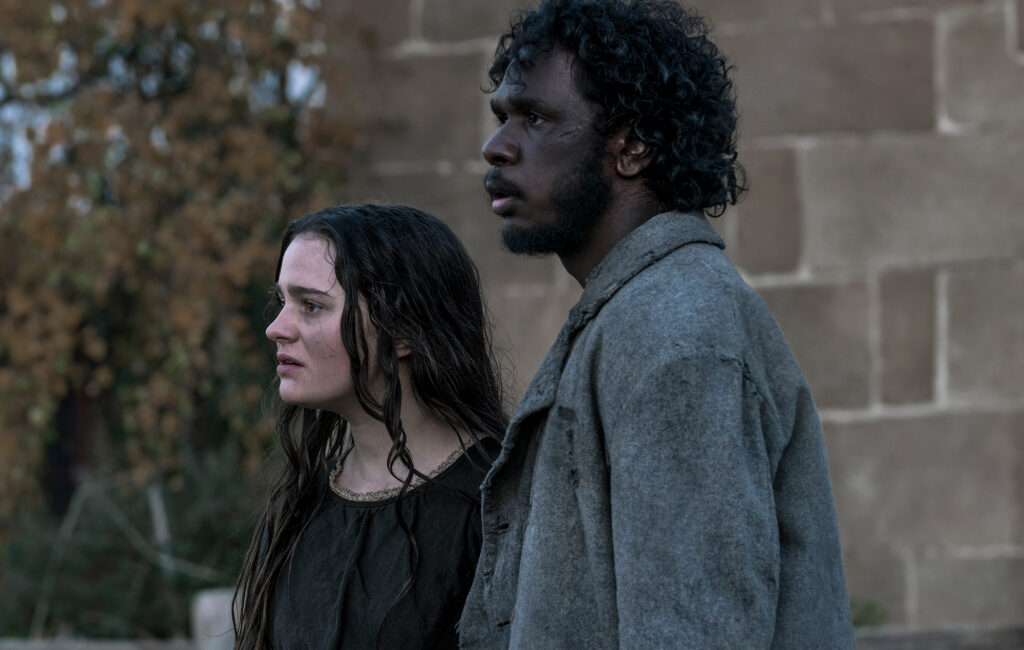
There is a lot that we can learn from films like The Nightingale. This is an undeniable blessing, but in many ways, it is also a curse. It’s a blessing because I have never been made to feel like a stranger, or a lesser, in my homeland. I find that educating myself on the histories of others to be much more valuable than my own history. It’s a curse because my privilege has rarely led me to consider what it is like to be colonized and to even forget that it is a significant historical burden.
This might be a tad heavy for a recommendation of a film, but that is also the value of this film. That, really, is the value of cinema itself. It’s why I love it and curate it.
Special Features
- The Nightingale In Context — A ‘Making Of’ The Nightingale Featurette With The Cast And Crew
- Behind The Scenes Featurette
- Theatrical Trailer
- Image Gallery
8. Essential Fellini
Director: Federico Fellini
Screenplay: Federico Fellini
Minutes: 1697
Year: Various
Release: Criterion Collection
Joining an exclusive “centennial”’ collection is this beautiful LP-styled collection of the films of Federico Fellini from the Criterion Collection. Is that enough instances of the word collection?
From Criterion.com:
One hundred years after his birth, Federico Fellini still stands apart as a giant of the cinema. The Italian maestro is defined by his dualities: the sacred and the profane, the masculine and the feminine, the provincial and the urbane. He began his career working in the slice-of-life poetry of neorealism, and though he soon spun off on his own freewheeling creative axis, he never lost that grounding, evoking his dreams, memories, and obsessions in increasingly grand productions teeming with carnivalesque imagery and flights of phantasmagoric surrealism while maintaining an earthy, embodied connection to humanity. Bringing together fourteen of the director’s greatest spectacles, all beautifully restored, this centenary box set is a monument to an artist who conjured a cinematic universe all his own: a vision of the world as a three-ring circus in which his innermost infatuations, fears, and fantasies take center stage
Every film by Federico Fellini that I have watched has been a master work of something. That something is usually a mystery to me, but I fully respect it. This box set of 11 newly-restored feature films by the maestro welcomes a few previously out-of-print titles back to the Criterion Collection as well as some new additions.

Someday I am going to have an excellent understanding of Fellini, but I am not expecting that any time soon. So I can understand if you are asking, “Jason, how can you call this a release of the year if you aren’t overly qualified on the subject?” Well, I’ll tell you. I don’t know. What I do know is that most of what I have seen are stone cold masterpieces that defied what filmmaking was and redefined what it could become.
This collection of cinematic history deserves a spot on any shelf, and when you add in the shorts, documentaries, interviews, and commentaries, you have, well, the Essential Fellini.
Special Features
- New 4K restorations of 11 theatrical features, with uncompressed monaural soundtracks for all films
- New digital restorations of the short film Toby Dammit (1968) and the television film Fellini: A Director’s Notebook (1969), with uncompressed monaural soundtracks
- Feature documentaries Fellini: I’m a Born Liar (2002) and Marcello Mastroianni: I Remember (1997), the latter presented in its 193-minute version
- Two-hour, four-part 1960 interview with director Federico Fellini by filmmaker André Delvaux for Belgian television
- Four behind-the-scenes documentaries: Reporter’s Diary: “Zoom on Fellini” (1965), Ciao, Federico! (1969), The Secret Diary of “Amarcord” (1974), and Fellini racconta: On the Set of “And the Ship Sails On” (1983)
- Fellini racconta: Passegiatte nella memoria, a 2000 documentary featuring interviews with a late-in-life Fellini
- Giulietta Masina: The Power of a Smile, a 2004 documentary about Fellini’s wife and frequent collaborator
- Once Upon a Time: “La dolce vita,” a French television documentary about the film
- Audio commentaries on six of the films
- Program from 2003 on Fellini’s 1980s television advertising work
- Archival interviews with Fellini stars and collaborators, including Mastroianni, Sandra Milo, Anouk Aimée, and Magali Noël
- Archival audio interviews by film critic Gideon Bachmann with Fellini, Mastroianni, and Fellini’s friends and family
- Video essays, trailers, and more
- PLUS: Deluxe packaging, including two lavishly illustrated books with hundreds of pages of content: notes on the films by scholar David Forgacs, essays by filmmakers Michael Almereyda, Kogonada, and Carol Morley; film critics Bilge Ebiri and Stephanie Zacharek; and novelist Colm Tóibín, and dozens of images spotlighting Don Young’s renowned collection of Fellini memorabilia
7. The Complete Films of Agnès Varda
Director: Agnès Varda
Screenplay: Agnès Varda
Minutes: 2,611
Year: Various
Release: Criterion Collection
The second of two major box sets from the Criterion Collection on this list is quite the tome. I cannot say that I am an expert when it comes to Agnès Varda, but I would like to eventually get there.
From Criterion.com:
A founder of the French New Wave who became an international art-house icon, Agnès Varda was a fiercely independent, restlessly curious visionary whose work was at once personal and passionately committed to the world around her. In an abundant career in which she never stopped expanding the notion of what a movie can be, Varda forged a unique cinematic vocabulary that frequently blurs the boundaries between narrative and documentary, and entwines loving portraits of her friends, her family, and her own inner world with a social consciousness that was closely attuned to the 1960s counterculture, the women’s liberation movement, the plight of the poor and socially marginalized, and the ecology of our planet. This comprehensive collection places Varda’s filmography in the context of her parallel work as a photographer and multimedia artist—all of it a testament to the radical vision, boundless imagination, and radiant spirit of a true original for whom every act of creation was a vital expression of her very being. Digital restorations of thirty-nine films, including the first home-video presentations of Les créatures, Jacquot de Nantes, and the television series Agnès de ci de là Varda
I am very late to the Varda party. I was already exhausted with the French New Wave before I screened any of Agnès Varda films. And I didn’t see a reason to rush it. I watched a few of her short films when they initially released the “By Agnès” playlist on the Criterion Channel, then Cleo from 5 to 7 on the day the Agnès died. Around the time of her passing there were rumors that Criterion would be releasing this massive set so I figured I could wait a little while longer, and I am glad that I did.
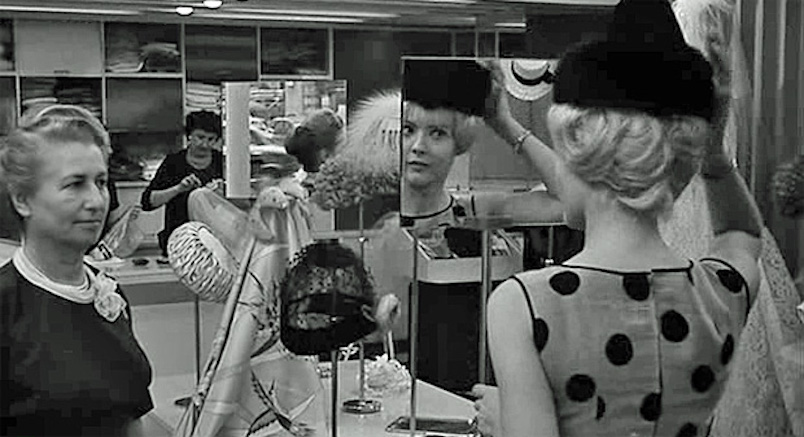
As you might imagine, with a running time of 2,611 minutes, I have not watched everything yet. I assume that the remaining films are as charming as the first few discs, and based on the lead-off documentary Varda by Agnès, they will be. So, I want to be able to spread out the joy as long as I can.
I often question putting many of these giant box sets on this list, but in this case it is about five cents a minute if you get it during any of the various half-off sales. And most of those minutes will improve your life, so it sort of comes out in the wash.
Special Features
- Introductions by director Agnès Varda
- Nausicaa, a once-banned 1970 television film directed by Varda
- New programs featuring actor Jane Birkin; Varda’s children, Mathieu Demy and Rosalie Varda; and scholar Kelley Conway
- Segments directed by Varda from the 1983 French television program Une minute pour une image
- Programs on Varda’s work as a visual artist, including Quelques veuves de Noirmoutier, a 2006 television presentation of one of her installations
- Over seven hours of archival programs featuring Varda, many of them also directed by her
- Archival interviews and tributes featuring Varda’s friends, family, and key collaborators
- Rare footage from unfinished features and commercials
- Behind-the-scenes footage, video essays, and trailers
- PLUS: A lavishly illustrated 200-page book, featuring notes on the films and essays on Varda’s life and work by writers Amy Taubin, Michael Koresky, Ginette Vincendeau, So Mayer, Alexandra Hidalgo, and Rebecca Bengal, as well as a selection of Varda’s photography and images of her installation art
- Cover design by Century.Studio
6. Paris is Burning
Director: Jennie Livingston
Screenplay: Jennie Livingston
Minutes: 76
Year: 1990
Release: Criterion Collection
Depending on who is producing a release, I might consider pulling the trigger sight unseen. The Criterion Collection is one of those companies, Paris is Burning was one of those titles, and Paris is Burning defied everything I could have ever expected.
From Criterion.com:
Where does voguing come from, and what, exactly, is throwing shade? This landmark documentary provides a vibrant snapshot of the 1980s through the eyes of New York City’s African American and Latinx Harlem drag-ball scene. Made over seven years, Paris Is Burning offers an intimate portrait of rival fashion “houses,” from fierce contests for trophies to house mothers offering sustenance in a world rampant with homophobia, transphobia, racism, AIDS, and poverty. Featuring legendary voguers, drag queens, and trans women—including Willi Ninja, Pepper LaBeija, Dorian Corey, and Venus Xtravaganza—Paris Is Burning brings it, celebrating the joy of movement, the force of eloquence, and the draw of community.
Paris Is Burning was restored by the UCLA Film & Television Archive in conjunction with Sundance Institute and Outfest UCLA Legacy Project. Preservation was funded by Sundance Institute, Outfest, and the Andrew J. Kuehn Jr. Foundation.
Based on the title, I was expecting Paris is Burning to be a French New Wave dramedy. As I mentioned, I trust Criterion and didn’t bother reading anything about this title. What I got, however, is a glorious documentary of mid- to late-80s drag ball life.
I suppose my confusion was tied to French culture based on the title, but I was also led astray because it was rumored to be announced from Criterion on April 15, 2019. Unfortunately, that was also the day of the fire at Notre-Dame de Paris. It would have been a tad insensitive to announce a Blu-ray of Paris is Burning on a day when Paris was actually burning. Whether or not the rumor is true is not relevant, but it does make an interesting tale.
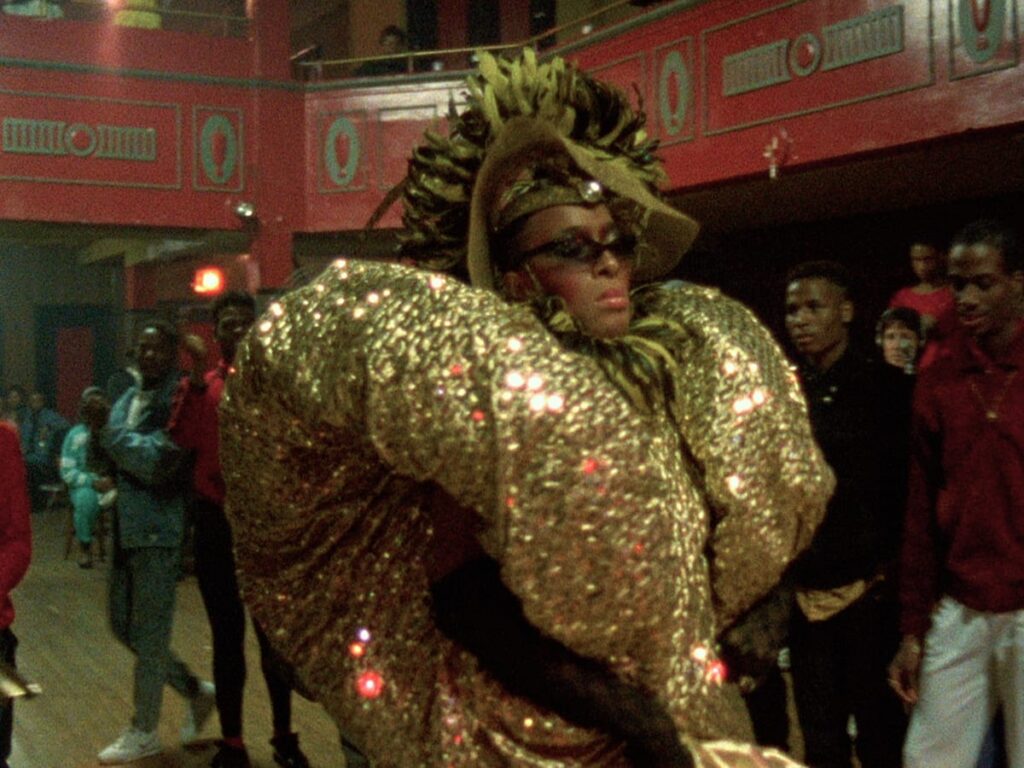
To say that I have little knowledge of this corner of LGBTQ+ history would be an understatement. Sure, I am aware of drag culture and this is a logical line of succession that I could have assumed. But here I was, popping over the case, still wholly ignorant of the contents, spinning up the disc, and becoming pleasantly surprised and engaged when it was an American documentary.
We could all do more in this world to get a better understanding of people who are different from us. Paris is Burning is a perfect additional source if this interests you. Ru Paul’s empire will likely be your first, but the rabbit hole goes pretty deep.
The special features on this release add some quality additional content to round out the experience. I happily call this one of the best releases of the year.
Special Features
- New 2K digital restoration, supervised by director Jennie Livingston, with uncompressed monaural soundtrack on the Blu-ray
- New conversation between Livingston, ball community members Sol Pendavis and Freddie Pendavis, and filmmaker Thomas Allen Harris
- Over an hour of never-before-seen outtakes
- Audio commentary from 2005, featuring Livingston, ball community members Freddie Pendavis and Willi Ninja, and film editor Jonathan Oppenheim
- New interview with LGBT film historian Jenni Olson
- Episode of The Joan Rivers Show from 1991, featuring Livingston and ball community members Dorian Corey, Pepper LaBeija, Freddie Pendavis, and Ninja
- Trailer
- English subtitles for the deaf and hard of hearing
- PLUS: An essay by filmmaker Michelle Parkerson and a 1991 review by poet Essex Hemphill
- New cover by Eric Skillman. Cover photo by Jennie Livingston
5. Fail Safe
Director: Sidney Lumet
Screenplay: Walter Bernstein and Peter George (uncredited)
Minutes: 112
Year: 1964
Release: Criterion Collection
If it weren’t for the Criterion Collection, I suspect I would have never heard of Fail Safe. Frankly when I saw the cover my first expectation was a 1950s action comedy. Boy was I ever wrong.
From Criterion.com:
This unnerving procedural thriller painstakingly details an all-too-plausible nightmare scenario in which a mechanical failure jams the United States military’s chain of command and sends the country hurtling toward nuclear war with the Soviet Union. Working from a contemporary best seller, screenwriter Walter Bernstein and director Sidney Lumet wrench harrowing suspense from the doomsday fears of the Cold War era, making the most of a modest budget and limited sets to create an atmosphere of clammy claustrophobia and astronomically high stakes. Starring Henry Fonda as a coolheaded U.S. president and Walter Matthau as a trigger-happy political theorist, Fail Safe is a long-underappreciated alarm bell of a film, sounding an urgent warning about the deadly logic of mutually assured destruction.
Fail Safe turned out to be an edge-of-my-seat thriller about an irreversible nuclear attack and the idea of mutually assured destruction. As a person with a penchant for horror films, please trust that movies like Fail Safe are much scarier than anything you might find in the horror section.
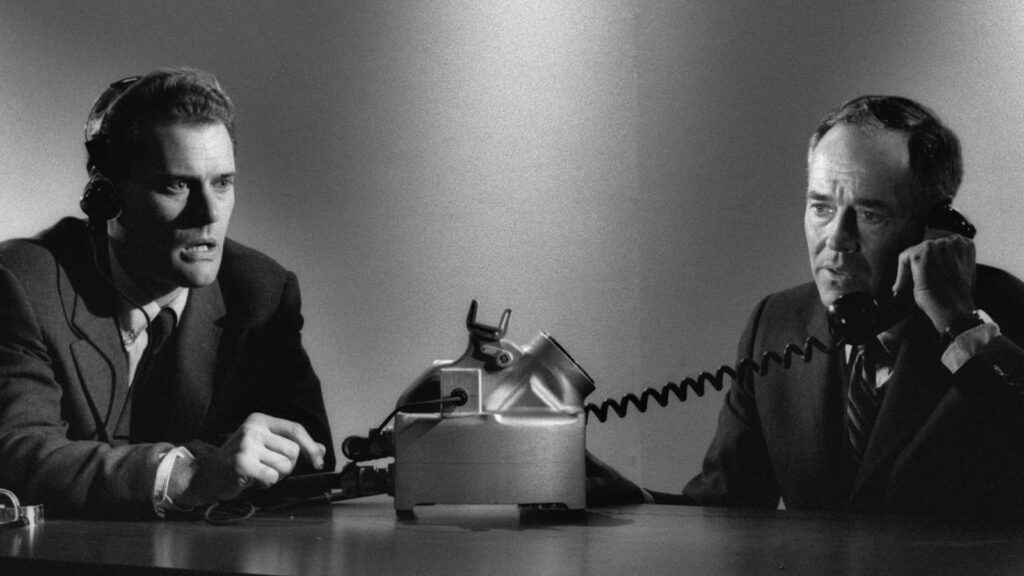
When I did the math for this list, I incidentally created a mortifying double feature with the next film on the list. It was unintentional, but it probably says something about how important anti-war films are to me. It’s such a silly concept that somehow became the basis of civilization.
While this film is quite depressing, when it comes to this list, you haven’t seen anything yet. The performances in the film are a standout, and this is probably my favorite Henry Fonda performance that I have seen.
Special Features
- New 4K digital restoration, with uncompressed monaural soundtrack on the Blu-ray
- Audio commentary from 2000 featuring director Sidney Lumet
- New interview with film critic J. Hoberman on 1960s nuclear paranoia and Cold War films
- “Fail Safe” Revisited, a short documentary from 2000 including interviews with Lumet, screenwriter Walter Bernstein, and actor Dan O’Herlihy
- English subtitles for the deaf and hard of hearing
- PLUS: An essay by film critic Bilge Ebiri
4. Hiroshima
Director: Hideo Sekigawa
Screenplay: Yasutarô Yagi
Minutes: 104
Year: 1953
Release: Arrow Academy
I am a glutton for punishment, I think. I’m afraid that too many cinephiles have a weird affection for the exploitation of historical trauma, which is probably the most disappointing sentence I have ever written.
From ArrowFilms.com:
Hiroshima (1953) is a powerful evocation of the devastation wrought by the world’s first deployment of the atomic bomb and its aftermath, based on the written eye-witness accounts of its child survivors compiled by Dr. Arata Osada for the 1951 book Children Of The A Bomb: Testament Of The Boys And Girls Of Hiroshima.
Adapted for the screen by independent director Hideo Sekigawa (Listen to the Voices of the Sea, Tokyo Untouchable) and screenwriter Yasutaro Yagi (Theatre of Life, Rice), Hiroshima combines a harrowing documentary realism with moving human drama, in a tale of the suffering, endurance and survival of a group of teachers, their students and their families. It boasts a rousing score composed by Akira Ifukube (Godzilla) and an all-star cast including Yumeji Tsukioka (Late Spring, The Eternal Breasts), Isuzu Yamada (Throne of Blood, Yojimbo) and Eiji Okada (Hiroshima Mon Amour, Woman in the Dunes), appearing alongside an estimated 90,000 residents from the city as extras, including many survivors from that fateful day on 6th August 1945.
Hiroshima was produced and distributed outside of the studio system by the Japan Teachers’ Union following the mixed critical reception to Children of Hiroshima (1952), directed by Kaneto Shindo the previous year, the first dramatic feature to deal directly with the atomic bombing. Although sequences from the film were used in Alain Resnais’ classic of French New Wave cinema, Hiroshima Mon Amour (1959), it has been effectively out of circulation in Japan and the rest of the world since its original release in 1953 due to the force and political sensitivity of its message. This new High Definition presentation is the complete version, restoring the footage from the international edit that was released in the United States in 1955.
When I saw that Arrow Academy was releasing a film called Hiroshima I was immediately intrigued. This was not a film that I was familiar with. This 1953 Japanese picture was directed by Hideo Sekigawa and is essentially propaganda.
The film depicts the everyday life of school children in Hiroshima in the days before the bomb was dropped. There is a twinge of mimicry in what you might see in a 1950s American television show married with the ideas of Where is My Friend’s Home? by Abbas Kiarostami. It is more than just blanket innocence. Shortly into Hiroshima’s plot the bomb explodes, and the film becomes a twin of Threads.

It is bizarre to ever compare a film to Threads, but this would be a sick and corrosive double feature. Please don’t ever watch it that way. You will undoubtedly consider destroying the planet, or yourself at the very least. What may be an interesting double feature is Hiroshima and the previous film on the list, Fail Safe.
If you have a real distaste for happiness, feel free to watch the 73-minute documentary included on the disc, but please consider waiting for some time before doing so. This release is an excellent addition to any collection. While this film is designed as a propaganda piece to tug on the heartstrings through the magnification of the pain and sorrow, it is an interesting expression of how Japan coped with the attack.
Special Features
- High Definition Blu-ray™ (1080p) presentation
- Original uncompressed audio
- Archive interview with actress Yumeji Tsukioka
- Hiroshima Nagasaki Download (2011), 73-minute documentary featuring interviews with survivors of the Hiroshima and Nagasaki atomic bombings now residing in the United States, with an introduction by the director Shinpei Takeda
- New video essay by Jasper Sharp
- Newly commissioned artwork by Scott Saslow
3. Ghost Dog: The Way of the Samurai
Director: Jim Jarmusch
Screenplay: Jim Jarmusch
Minutes: 116
Year: 1999
Release: Criterion Collection
“There is something to be learned from a rainstorm. When meeting with a sudden shower, you try not to get wet and run quickly along the road. But doing such things as passing under the eaves of houses, you still get wet. When you are resolved from the beginning, you will not be perplexed, though you still get the same soaking. This understanding extends to everything.
—Tsunetomo Yamamoto, The Hagakure: A code to the way of samurai””
From Criterion.com:
Jim Jarmusch combined his love for the ice-cool crime dramas of Jean-Pierre Melville and Seijun Suzuki with the philosophical dimensions of samurai mythology for an eccentrically postmodern take on the hit-man thriller. In one of his defining roles, Forest Whitaker brings a commanding serenity to his portrayal of a Zen contract killer working for a bumbling mob outfit, a modern man who adheres steadfastly to the ideals of the Japanese warrior code even as chaos and violence spiral around him. Featuring moody cinematography by the great Robby Müller, a sublime score by the Wu-Tang Clan’s RZA, and a host of colorful character actors (including a memorably stone-faced Henry Silva), Ghost Dog: The Way of the Samurai plays like a pop-culture-sampling cinematic mixtape built around a one-of-a-kind tragic hero.
I can hardly think of a sentiment that better describes the atmosphere of 2020. Rushing through something doesn’t work when you are dodging something that does not care if it hits you; it doesn’t care that you are even in the way.
The first time I watched Ghost Dog it did not click very well. I assume that this is because of ignorance and youthful predilections, because I recall it being slow. Now that I have a better understanding of peace and tranquility through adversarial complications—and the cinema of Seijun Suzuki—I appreciate the pacing and the content.

My excitement for this Criterion Collection edition started when they sent out an email requesting questions for their ongoing series of Q&As with Jim Jarmusch. I asked a question about Jarmusch’s relationship with RZA because it was a perfect choice for the film’s score. As of December 7, 2020, is available for the first time in America from the 36Cinema website. RZA’s music fits the film to a tee, but more importantly the score opened the door for RZA’s film career, including his new film Cut Throat City—a very close contender to making this list.
I am not an assassin, unless you consider one of my reviews overly savage (which you probably shouldn’t), nor do I communicate via carrier pigeon, but I find the stoicism of Ghost Dog to be a common trait. This is certainly a “your mileage may vary” situation, but I think that Ghost Dog: The Way of the Samurai should be on every shelf.
Special Features:
- New 4K digital restoration, supervised and approved by director Jim Jarmusch, with 5.1 surround DTS-HD Master Audio soundtrack on the Blu-ray
- Alternate isolated stereo music track
- New Q&A with Jarmusch, in which he responds to questions sent in by fans
- New conversation between actors Forest Whitaker and Isaach De Bankolé, moderated by film scholar Michael B. Gillespie
- New interview with casting director Ellen Lewis
- New interview with Shifu Shi Yan Ming, founder of the USA Shaolin Temple
- Flying Birds: The Music of “Ghost Dog,” a new video essay on RZA’s score by filmmaker Daniel Raim
- The Odyssey: A Journey into the Life of a Samurai, a 2000 program on the making of the film
- Deleted scenes and outtakes
- Archival interviews
- Trailer
- English subtitles for the deaf and hard of hearing
- PLUS: Essays by critics Jonathan Rosenbaum and Greg Tate, a 2000 interview with Jarmusch, and quotations from Hagakure: The Book of the Samurai, by the early-eighteenth-century monk Yamamoto Tsunetomo
2. Solid Metal Nightmares: The Films of Shinya Tsukamoto
(from my original review)
Director: Shinya Tsukamoto
Screenplay: Shinya Tsukamoto
Minutes: 754
Year: 2020
Release: Arrow Films
Hello friends. Long time readers will know that in this section, above the copy from a reputable outlet, I tend to write something a bit quippy, laden with sometimes nonsensical comments tangentially related to the movie you are about to espouse. Regretfully I cannot. I am still recovering from my experience of watching the films in the Arrow Films box set, Solid Metal Nightmares: The Films of Shinya Tsukamoto.
From DiabolikDVD.com:
One of the most distinctive and celebrated names in modern Japanese cinema, there’s no other filmmaker quite like Shinya Tsukamoto. Since his early days as a teenager making Super 8 shorts, he has remained steadfastly independent, garnering widespread acclaim while honing his own unique and instantly recognizable aesthetic on the margins of the industry. Frequently exploring themes of urban alienation, physical transformation and psychosexual obsession, his films cross genre boundaries, defying straightforward classification. This exclusive collection gathers together eight feature-length films and two shorts from Tsukamoto’s diverse filmography, including his most recent offering – his samurai drama Killing, making its home video premiere.
Includes:
Tetsuo: The Iron Man, Tetsuo II: Body Hammer, Tokyo Fist, Bullet Ballet, A Snake of June, Vital, Kotoko, Killing, The Adventure of Denchu-Kozo, Haze
My first experience with Tsukamoto was earlier this year when Elric Kane mentioned A Snake of June in an episode of Pure Cinema Podcast. It would be nice to say I am a lifelong fan, but I am occasionally slow on the uptick. At the time A Snake of June was only available on DVD from Tartan Extreme. So, I got it, watched it, and it changed me. However, as is typical of your humble author, shortly after I purchased a DVD a glorious Blu-ray was announced.
The good news was that I wasn’t going to have to wait too long to watch more of Tsukamoto’s films; the bad news was that I had yet another old DVD that might get me in trouble if I bought a second copy. With luck, though, our friends at Arrow Video decided to package Snake with nine other films.
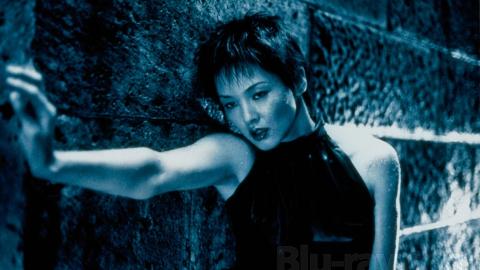
Overall, Solid Metal Nightmares: The Films of Shinya Tsukamoto seems like more of a package of clips that the doctors in A Clockwork Orange would have used to mentally castrate Alex. It could be a series of films you give an enemy so they become afraid of your mental instability.
But, it is also a collection of some of the most authentic, thought provoking, subversive, and horrific films that you can find (which are not also in Swedish; let’s be honest, these adjectives should easily identify a recent Bergman collection). These probably aren’t films that you are going to want to watch over and over again because they suck the life out of you, but if you have an itch for the darker sort of company that most humans or animals cannot provide then Solid Metal Nightmares just might be that friend you need.
While most sets from Arrow sell out too quickly, this one is criminally still available, and if you have read this far without blocking my site in your firewall, then you are probably going to want to find a copy and snag it while you can.
Special Features:
- High Definition Blu-ray™ (1080p) presentations of all ten films
- Original lossless PCM 1.0 mono audio on Tetsuo: The Iron Man, Tetsuo II: Body Hammer and Tokyo Fist
- Original lossless PCM 2.0 stereo audio on Bullet Ballet and Haze
- Original lossless DTS-HD Master Audio 5.1 on A Snake of June, Vital, Kotoko and Killing
- Optional lossless DTS-HD Master Audio 5.1 on Bullet Ballet
- Optional English subtitles for all films
- Audio commentaries by Japanese cinema expert Tom Mes on all ten films, including brand new commentaries on Tetsuo, Tetsuo II, Tokyo Fist, A Snake of June, Kotoko, Killing, The Adventure of Denchu-kozo and Haze
- Brand new career-spanning interview with Shinya Tsukamoto
- An Assault on the Senses, a brand new visual essay on the films and style of Shinya Tsukamoto by Japanese cinema expert Jasper Sharp
- Multiple archival interviews with Shinya Tsukamoto, covering every film in the collection
- Shooting A Snake of June, an archival behind-the-scenes featurette on the film’s production
- Archival The Making of Vital featurette
- Archival behind-the-scenes featurette on Vital’s world premiere at the Venice Film Festival
- Archival featurette on Vital’s special effects
- The Making of Haze, an archival behind-the-scenes featurette on the film’s production
- Kaori Fuji at the Locarno Film Festival, an archival featurette focusing on Haze’s lead actress
- Archival Background to The Adventure of Denchu-Kozo featurette
- Tokyo Fist, Bullet Ballet and Vital music clips
- Multiple trailers and image galleries
- Limited edition packaging featuring original and newly commissioned artwork by Gilles Vranckx, Gary Pullin, Ian MacEwan, Chris Malbon, Jacob Phillips, Tommy Pocket, Peter Strain and Tony Stella
- Double-sided fold-out poster
- Illustrated collector’s booklet featuring new writing on the films by Kat Ellinger, Jasper Sharp and Mark Schilling”
1. Come and See
Director: Elem Klimov
Screenplay: Elem Klimov
Minutes: 142
Year: 1985
Release: Criterion Collection
“And I heard as it were the noise of thunder
One of the four beasts saying, come and see
And I saw, and behold a white horse”
—Johnny Cash, “The Man Comes Around”
I have watched Come and See twice in my life, and it wrecked me both times. Elem Klimov’s Russian war film can do more to convince people of the horrors of war than nearly any other film I have ever watched.
From Criterion.com:
This legendary film from Soviet director Elem Klimov is a senses-shattering plunge into the dehumanizing horrors of war. As Nazi forces encroach on his small village in what is now known as Belarus, teenage Flyora (Alexei Kravchenko, in a searing depiction of anguish) eagerly joins the Soviet resistance. Rather than the adventure and glory he envisioned, what he finds is a waking nightmare of unimaginable carnage and cruelty—rendered with a feverish, otherworldly intensity by Klimov’s subjective camera work and expressionistic sound design. Nearly blocked from being made by Soviet censors, who took seven years to approve its script, Come and See is perhaps the most visceral, impossible-to-forget antiwar film ever made.
Let’s assume that you have not seen this film but you have watched last year’s 1917. Come and See works on some of the same themes of physical change from exhaustion as you see in 1917, but when it comes to draining emotion, Sam Mendes’s film will leave you feeling warm and fuzzy next to Klimov’s. Come and See tells the story of Flyora, a teenager who yearns to join the Soviet Union resistance against the Nazi forces marching through the local villages. A noble aim for any young, virile man.
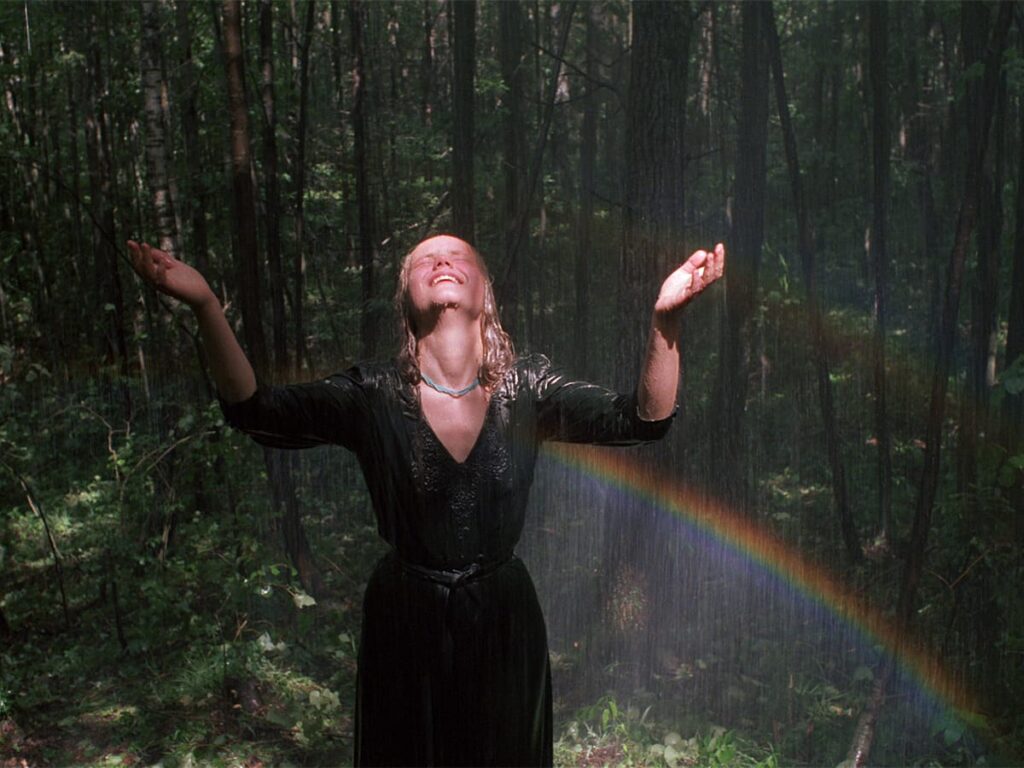
The physical transformation that Alexei Kravchencko’s Flyora goes through acts as the salt at the bottom of a desiccator, pulling the life out of the viewer. Watching the youthful vigor drain out of Flyora should be sufficient testimony to end war for all time if the necessary people would watch the film.
The only issue I take with this release is the cover art that the Criterion Collection has chosen. While accurate, a crueler but more effective choice would have been to have cover artist Jaxon Northan paint a portrait of Flyora when he still has hope and joy in his face.
It is worth noting that while the plot is more in line with the bleak nihilism of authoritarianism, the cinematography is magnificent, and the restoration has lifted the cloudy veil of time and film deterioration revealing the photography of Aleksei Rodionov.

The three films from the Flaming Memory documentary series are a good tool to verify the veracity Klimov fictionalized in Come and See. The interviews are all bonuses. I knew from the announcement of this edition that I would be getting it, not because I wanted to scrape away a little happiness, but because I knew that it would be on this list and it is very important to me that as many people as possible see this film.
Special Features
- New 2K digital restoration, with uncompressed monaural soundtrack on the Blu-ray
- New interview with cinematographer Roger Deakins
- New interview with director Elem Klimov’s brother and frequent collaborator German Klimov
- Three 1975 films from Flaming Memory, a documentary series by Viktor Dashuk featuring firsthand accounts of survivors of the genocide during World War II in what is now known as Belarus
- Interview from 2001 with Elem Klimov
- Interviews from 2001 with actor Alexei Kravchenko and production designer Viktor Petrov
- The Story of the Film “Come and See,” a 1985 short film featuring interviews with Klimov, Kravchenko, and writer Ales Adamovich
- Theatrical rerelease trailer
- PLUS Essays by critic Mark Le Fanu and poet Valzhyna Mort

